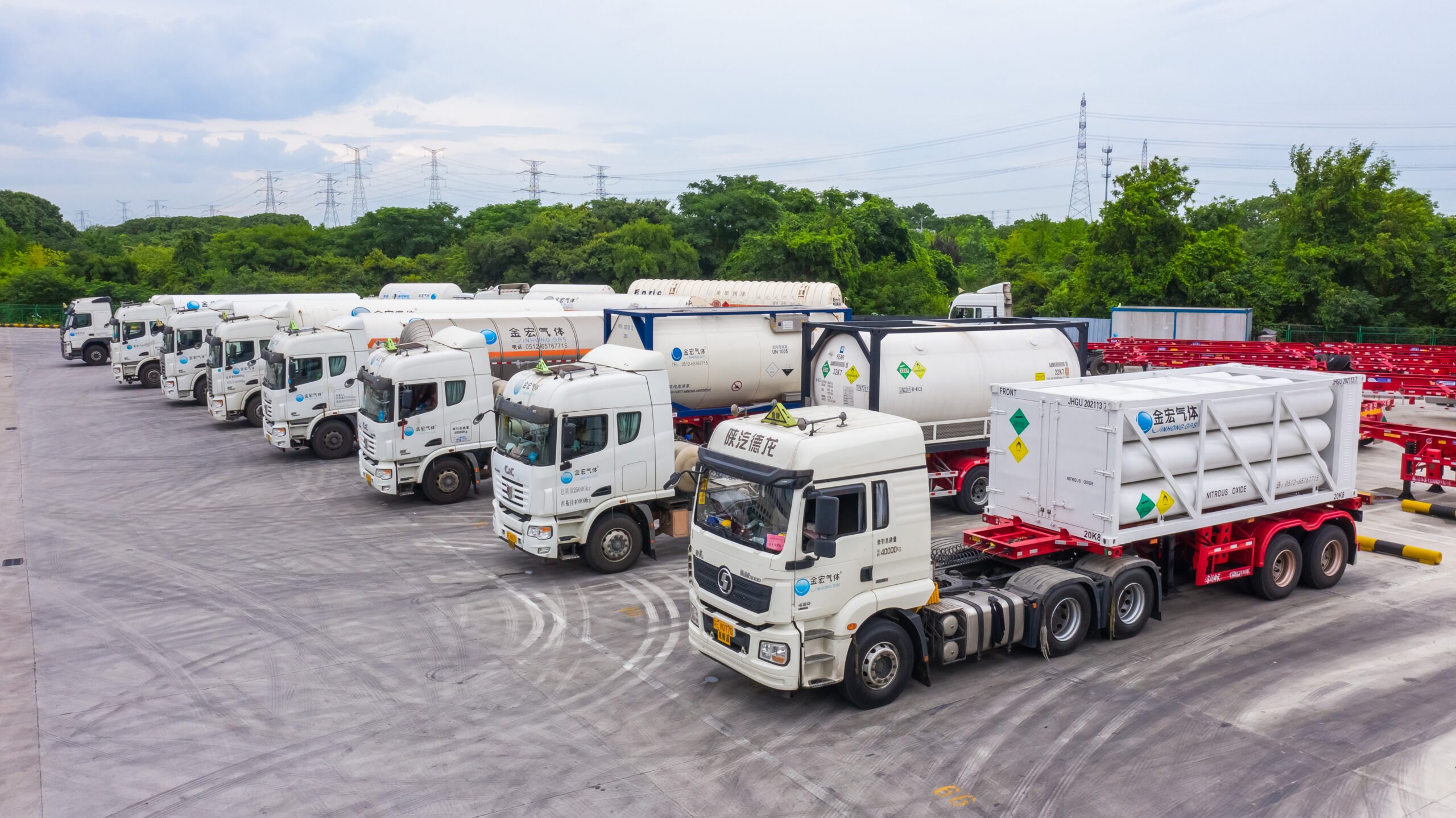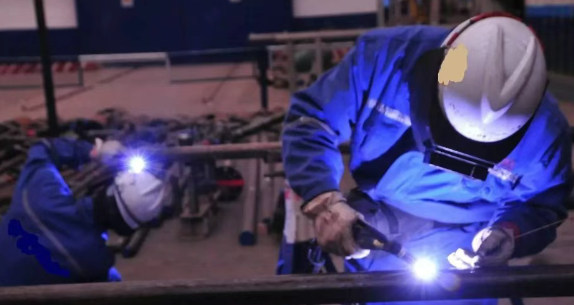Oxygen is a vital element for sustaining life, and its purity and impurity control directly determine its safety across different applications. While both industrial oxygen and medical oxygen are gaseous oxygen, they differ fundamentally in production standards, composition control, application fields, and regulatory systems. These differences not only exist at the technical level but also have a profound impact on human health and industrial production efficiency.

I. Core Difference: The Dual Standard of Purity and Impurities
(1) Medical Oxygen – The Pure Barrier for Life Support
Medical oxygen must meet a purity standard of 99.5% or higher as specified in the Chinese Pharmacopoeia. The focus lies in the strict limitation of harmful impurities. For instance, carbon monoxide content must be below 0.0005%, carbon dioxide concentration cannot exceed 0.03%, and gaseous acids, alkalis, or oxidizing agents such as ozone must be rigorously controlled. This high level of purity is essential because medical oxygen enters the human bloodstream directly.
During production, medical oxygen is obtained through cryogenic air separation, involving multi-stage molecular sieve adsorption and low-temperature rectification to remove nitrogen, argon, and other inert gases. Additionally, the gas passes through 0.01 μm fine filtration, ensuring that no solid particles larger than 0.01 microns remain—reducing airborne impurities to parts-per-million levels.
(2) Industrial Oxygen – Efficiency-Oriented Pragmatism
Industrial oxygen typically has a purity of 99.2%–99.5%, allowing 0.3%–0.5% impurities such as carbon monoxide, methane, acetylene, water vapor, and rust particles. For example, oxygen used in welding may contain up to 0.1% moisture, exceeding the 0.07% limit for medical oxygen.
Industrial oxygen is commonly produced using pressure swing adsorption (PSA) or membrane separation methods, emphasizing speed and cost-efficiency rather than deep purification. This “good enough” standard can reduce production costs by about 40% compared to medical oxygen.
Distinguishing Medical Oxygen from Industrial Oxygen
| Aspect | Medical Oxygen | Industrial Oxygen |
|---|---|---|
| Applicable Standard | GB/T 8982-2009 (Medical & Aviation Breathing Oxygen) | GB/T 3863-2008 (Industrial Oxygen) |
| Purity Level | ≥99.5% | ≥99.0% |
| Harmful Impurities | Strictly limited (CO < 0.0005%, CO₂ < 0.03%) | May contain CO, CH₄, acetylene, etc. |
| Moisture Content | ≤0.07% | ≤0.1% or higher |
| Odor and Color | Odorless, colorless, clean | May have metallic or rusty smell |
| Health Safety | Safe for human inhalation | Unsafe for medical or breathing use |
| Primary Application | Hospitals, clinics, emergency care | Welding, cutting, combustion, metallurgy |
| Production Method | Cryogenic distillation & multi-stage filtration | PSA or membrane separation |
| Regulation | Pharmaceutical-grade with strict quality control | Industrial-grade with lower regulation |
II. Application Fields: Protecting Life vs. Powering Industry
(1) Medical Field – A Foundation for Precision Therapy
In intensive care units, medical oxygen is delivered through high-flow humidifiers with oxygen concentration precisely adjustable between 21% and 100%. For example, COPD patients typically require 24%–28% oxygen therapy to prevent CO₂ retention, while patients with acute respiratory distress syndrome may need over 60% oxygen support. Even trace impurities could disrupt the delicate balance of blood oxygen saturation.
In operating rooms, medical oxygen is mixed with anesthetic gases, and its humidity must remain below 0.07% to prevent condensation in respiratory circuits. Studies have shown that replacing medical oxygen with industrial oxygen during general anesthesia can increase ventilator failure rates by 37%, primarily due to excess moisture.
(2) Industrial Field – Maximizing Production Efficiency
In steelmaking, industrial oxygen is used in basic oxygen furnaces (BOF) at flow rates up to 3,000 m³/min. Although 0.3% impurities may slightly reduce oxidation efficiency, adjusting the oxygen lance height and blowing duration can compensate for the loss. Replacing industrial oxygen with medical oxygen in steelmaking would raise costs by 23 yuan per ton, with negligible improvement in steel purity.
In glass manufacturing, industrial oxygen used in flame torches may contain 0.05% CO₂, which decomposes into CO under high temperatures—enhancing the reducing properties of the flame and improving glass transparency. This demonstrates how certain impurities can actually be beneficial in industrial processes.
III. Comparison of Use
Medical oxygen is used to treat hypoxia-related conditions such as asthma, bronchitis, pulmonary heart disease, coronary heart disease, myocardial infarction, stroke, and cerebral infarction. It also helps relieve fatigue after intense mental or physical activity.
Industrial oxygen, on the other hand, only requires purity control without specific hygiene standards. It may contain harmful gases such as CO or CH₄, as well as moisture, dust, and bacteria, making it suitable only for cutting, welding, and combustion processes.
IV. Distinguishing Medical Oxygen from Industrial Oxygen
- Different Standards
- Industrial oxygen follows GB/T 3863-2008 (Industrial Oxygen).
- Medical oxygen follows GB/T 8982-2009 (Medical and Aviation Breathing Oxygen), which is far stricter.
- Different Concentrations
- Medical oxygen must have ≥99.5% purity, be colorless, odorless, and free from harmful gases.
- Industrial oxygen (≥99%) may contain CO, CO₂, halogen gases, or acetylene, which can damage the respiratory system. For patients with respiratory or cardiovascular diseases, inhaling industrial oxygen can worsen symptoms or even cause life-threatening hypoxia.
- Different Moisture Control
- Medical oxygen requires extremely low moisture content to prevent oxidation or infection.
- Industrial oxygen does not have strict moisture requirements.
V. Health Risks: The Invisible Danger vs. the Safety Shield
(1) Hidden Dangers of Industrial Oxygen
Clinical data show that 72% of patients who accidentally inhaled industrial oxygen experienced throat burns, while 41% developed bronchial spasms. Even 0.02% CO can bind with hemoglobin 240 times more strongly than oxygen, reducing blood oxygen capacity.
Moisture and rust also pose serious risks. In one COPD case, prolonged use of oxygen containing 0.15% water led to rust accumulation inside the ventilator tubing and chemical pneumonia due to elevated iron ion levels.
(2) Safety Design of Medical Oxygen
Medical oxygen undergoes dual-stage drying, using refrigeration and adsorption to lower dew points to -60°C, keeping moisture at 0.03–0.05%—well below standard limits.
Medical cylinders are treated through acid washing, phosphating, and coating, keeping internal roughness below Ra 0.2 μm. This extends their service life to 15 years, compared to 8 years for industrial cylinders.
VI. Technological Evolution: From Basic Separation to Precision Control
(1) Advances in Medical Oxygen Production
Modern systems combine cryogenic distillation and catalytic oxidation to reduce CO content to 0.00005%, meeting international standards. IoT monitoring platforms now track over 100 parameters in real-time, automatically switching backup systems when oxygen concentration fluctuates by more than ±0.5%.
(2) Efficiency Breakthroughs in Industrial Oxygen Production
In industrial oxygen generation, membrane separation and AI-driven process control have improved oxygen recovery rates from 85% to 92%, reduced energy consumption by 18%, and lowered inventory costs by 33%.
VII. Price Comparison
Medical oxygen is significantly more expensive—often costing twice as much as industrial oxygen. Prices vary by region and market conditions. For up-to-date quotations, customers can contact professional gas suppliers.
VIII. How to Verify Medical-Grade Oxygen
- Check the Batch Number and Expiry Date – Medical oxygen must have an approved pharmaceutical batch number and a 12-month validity period.
- Check the Hydrostatic Test Stamp – Cylinders must undergo pressure testing every three years for safety.
- Smell Test – Industrial oxygen may have a metallic or rusty odor due to impurities and corrosion.
IX. Hazards of Using Industrial Oxygen for Medical Purposes
- Respiratory Irritation and Damage: Impurities such as dust, acidic gases, or alkaline vapors can cause inflammation or tissue injury.
- Toxicity Risk: CO or sulfur compounds can lead to hypoxia or poisoning.
- Infection Risk: Moisture and bacteria in non-sterile oxygen can cause lung infections.
- Condition Deterioration: Patients using impure oxygen may experience worsened symptoms or life-threatening outcomes.
Case Example:
Between 2017 and 2019, a gas company in Xinjiang illegally sold 1,794 tons of industrial oxygen as medical-grade oxygen, containing CO and H₂S impurities. In high-altitude regions, this reduced blood oxygen transport by over 30%, increasing the risk of pulmonary edema. The company was fined 11 million yuan, and key personnel were sentenced to up to 12 years in prison.
X. Typical Question: What Is the Concentration of Medical Oxygen?
Medical oxygen must contain ≥99.5% O₂, be free of CO, CO₂, or any harmful gases. Industrial oxygen only specifies purity, not safety composition, and therefore is not suitable for medical use.
About Jinhong Gas
Jinhong Gas is a professional industrial and specialty gas supplier committed to providing safe, reliable, and high-purity gases for diverse industries, including healthcare, electronics, metallurgy, and energy. With advanced air separation and purification technology, we produce medical-grade oxygen that meets strict international standards.
Beyond medical gases, Jinhong Gas also offers a full range of industrial oxygen, nitrogen, argon, helium, and specialty mixtures tailored to customer needs. Our production facilities integrate intelligent monitoring systems to ensure consistent quality and safety.
Whether you require medical oxygen for clinical use or industrial oxygen for manufacturing applications, Jinhong Gas delivers trusted quality, consistent supply, and professional service worldwide.


